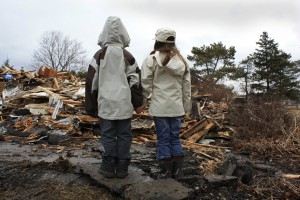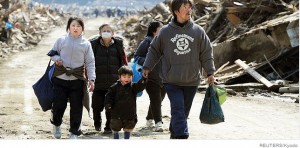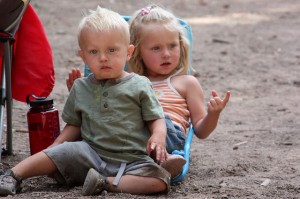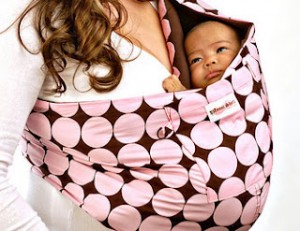Momma Bear’s post about birth control got me thinking: “What would it be like to be raising young children in a collapsed world? What would that look like? How would it be different from what we do today?”
 I should start by saying that I don’t have any children of my own. However, that doesn’t mean that I won’t someday or that my friends or step-kids won’t. It’s important to consider the ramifications of having a child, both in our society as it is now, and how it would be in a potential disaster or complete collapse.
I should start by saying that I don’t have any children of my own. However, that doesn’t mean that I won’t someday or that my friends or step-kids won’t. It’s important to consider the ramifications of having a child, both in our society as it is now, and how it would be in a potential disaster or complete collapse.
 The challenges of having an infant or toddler in a post-collapse world would be huge for today’s ‘modern’ parents. It becomes incredibly difficult – if not impossible – to easily bug-out, especially if you’re going any distance on foot. An infant (child under 12 months old) can be carried, but if you are carrying that child you are then limited in what else you can take with you, i.e. BOBs, additional water, food, etc. Now, what if that child is a toddler? Anyone who’s spent any time with a child this age knows that they don’t always (ever) want to be carried. You now have a toddler fighting being carried and/or walking (toddling) beside you. Neither of these scenarios allow you to walk with any speed and could potentially draw unwanted attention.
The challenges of having an infant or toddler in a post-collapse world would be huge for today’s ‘modern’ parents. It becomes incredibly difficult – if not impossible – to easily bug-out, especially if you’re going any distance on foot. An infant (child under 12 months old) can be carried, but if you are carrying that child you are then limited in what else you can take with you, i.e. BOBs, additional water, food, etc. Now, what if that child is a toddler? Anyone who’s spent any time with a child this age knows that they don’t always (ever) want to be carried. You now have a toddler fighting being carried and/or walking (toddling) beside you. Neither of these scenarios allow you to walk with any speed and could potentially draw unwanted attention.
If you can instead bug-in this removes some of the mobility issues that accompany infants and toddlers. However, now there’s the surviving day-to-day. Are you hunting and/or scavenging for food? A crying child doesn’t do much to lure game to you, or help you remain unseen. What is your child willing or able to eat? If your child isn’t used to eating anything but jarred baby food, suddenly switching to a hunter/gatherer diet, or even an MRE diet, will not go smoothly.
 The things to think about with young children don’t differ greatly from the things we need for ourselves.
The things to think about with young children don’t differ greatly from the things we need for ourselves.
Food – The best thing you can do for an infant is breastfeed. I know this is not possible for some, but it is the easiest and cheapest way to feed a baby. If you can’t breastfeed, make sure you have in your preps enough formula or other supplemental milk to last your baby through six months of age. For toddlers, start encouraging them to try the food you eat (and store). If you need to, overcook it a bit and squish it up.
Water – Young children are especially susceptible to dehydration caused by overheating or diarrhea from dysentery, therefore sanitary water is key. Unlike adults a child will appear just fine, until they’re not, and then deteriorates very quickly.
 Security (Safety), Shelter – Infants and toddlers love to explore so keeping them safe, even today, can be a challenge. In a collapse, when every able adult will need to be working, minding the babies is not something that a mom or dad can be spared to do. For infants I recommend checking out the various slings available for carrying babies – they are simple, come in many shapes and sizes, and are tremendously versatile. This option allows the child to be carried while leaving both hands free for working. What is your group’s plan for caring for toddlers? It’s great if there are older children around, or maybe a “grandma”, who can play with and watch over them. Keeping young children safe truly is the ‘village’ raising the child.
Security (Safety), Shelter – Infants and toddlers love to explore so keeping them safe, even today, can be a challenge. In a collapse, when every able adult will need to be working, minding the babies is not something that a mom or dad can be spared to do. For infants I recommend checking out the various slings available for carrying babies – they are simple, come in many shapes and sizes, and are tremendously versatile. This option allows the child to be carried while leaving both hands free for working. What is your group’s plan for caring for toddlers? It’s great if there are older children around, or maybe a “grandma”, who can play with and watch over them. Keeping young children safe truly is the ‘village’ raising the child.
I believe that much of our “preps” for living with young children can be taken from human history and can be applied now and not just in a collapse situation. For thousands of years infants and toddlers were raised in tribes where they are no daycares, formula, or Purell. Instead there were grandmas, slings, and water. Prepping with and for infants and toddlers doesn’t need to be difficult; but thinking and planning for it now is key.
(Friday: Momma Bear’s June Preps)


















